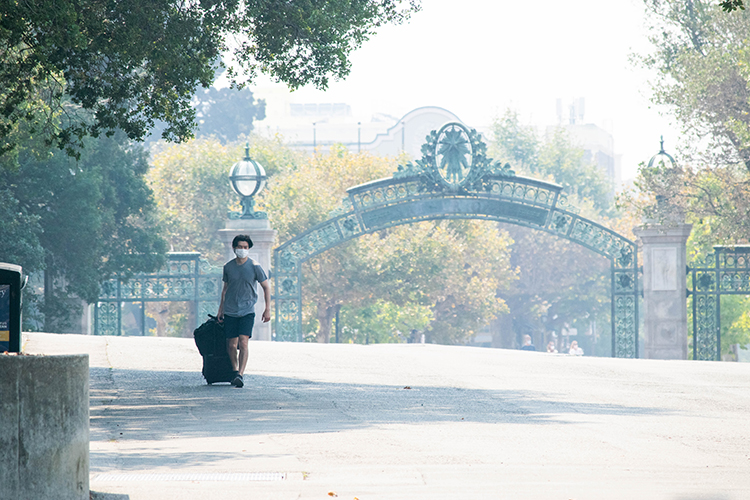Campus leaders talk budget status, resilience during the pandemic
Chancellor Carol Christ and Executive Vice Chancellor and Provost Paul Alivisatos provided insight into the past semester, and gave an important campus budget update

December 10, 2020
As the economic fallout from the COVID-19 pandemic continues to ravage UC Berkeley’s budget, begetting “a semester like no other,” campus leaders Wednesday said that while the road to recovery may be long, the campus’s renowned resilience would be key to our long-term fiscal health.
During the fall semester’s final Campus Conversations event, which centered on the campus budget, Chancellor Carol Christ was joined by Paul Alivisatos, executive vice chancellor and provost; Rosemarie Rae, vice chancellor of finance and chief financial officer; and Marc Fisher, vice chancellor of administration, to offer an end-of-semester review and respond to questions on topics ranging from furloughs to layoffs to retirement.
“This has been a semester like no other. It is certainly the hardest time in my adult life,” Christ said. “I am inspired everyday by the dedication, the creativity, the resilience that our students, faculty and staff are showing. There have been lots and lots of challenges, and I know how very difficult this time has been for all of us.”
Christ went on to recount the deep budgetary impacts of the pandemic, including:
• losses totaling $340 million from the shutdown beginning in March 2020 to June 2021
• a drop in enrollment of nearly 800 students, resulting in a $15 million loss
• a reduction in state funding totaling $42 million
At the same time, the campus has had to absorb additional COVID-related expenses for remote instruction, COVID-19 testing and extra cleaning and sanitizing of campus facilities.
Berkeley is not alone. Campuses across the country are grappling with unprecedented financial hurdles as leaders search for ways to blunt the economic pain brought on by COVID-19.
“We recognize that this has been an extremely difficult time for every person on the Berkeley campus. It’s been challenging in so many dimensions,” Alivisatos said. “One thing that has made me, throughout this crisis, really feel better has been the extent to which the entire Berkeley community has worked together to overcome the crisis.”
Alivisatos added that the administration has worked hard to preserve jobs and to support and prioritize the needs of students and staff throughout the last several months. Still, Christ noted, across-the-campus furloughs will be necessary to help balance the budget, in addition to other measures, such as hardening the campus-wide hiring freeze, slowing capital projects and potentially taking on more debt.
Creating new revenue streams and beefing up others will play a critical part in helping the Berkeley to emerge from wrenching debt, too, Christ said. Plans for increased monetization of intellectual property, increasing extramurally-funded research and leaning into philanthropy are just a few of the many ideas under exploration, she said.
Rae said the campus should expect a “two-to-three-year recovery period,” regarding Berkeley finances. But she said that she was confident that there is a lighted path out of the budgetary thicket.
Said Rae, “We invested very early in developing some sophisticated modeling that helped us to anticipate the financial effects of COVID-19. The modeling has proven to be accurate and instructive. That helps to contribute to the road map that we’ve established. That creates comfort for the campus community that we can find our way out of this crisis.”